From Contraception to Clearer Skin… Diane 35 Benefits Explained
Table of Contents
When it comes to women’s health and well-being, Diane 35 has earned recognition and popularity as a versatile medication that addresses multiple conditions involving various hormonal changes in the body. While primarily considered a contraceptive, it’s also prescribed for treating acne, hirsutism, and several other conditions.
In terms of ingredients, each tablet typically contains 2 milligrams of cyproterone acetate which is an anti-androgen and 35 micrograms of ethinylestradiol which is a synthetic oestrogen. The combination of these hormones helps to prevent ovulation, regulate the menstrual cycle, and address quite a few hormone-mediated conditions in women.
In this blog, we’ll take a practical look at the benefits of Diane 35, from clearer skin to regulated menstrual cycles, and how it’s making a difference in the lives of those who rely on it.
Is Diane 35 a Birth Control Pill?
Yes, Diane 35 is indeed a birth control pill. It works by preventing ovulation, thickening cervical mucus to impede sperm movement, and altering the uterine lining to inhibit implantation. When taken correctly and consistently, Diane 35 is highly effective in preventing pregnancy, with a reported failure rate of less than 1% when used as directed.
-
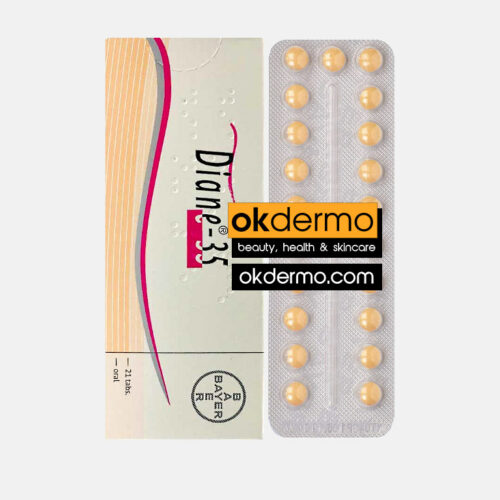
Diane 35® Tablets
Cyproterone 2mg + Ethinyl Estradiol 0.035mg
Brand name: Alisma, Ancea, Axira, Bellgyn, Bellune, Chloe, Claudia, Diclin, Feminac
Size: 21 Tablets
USD $27.00 Add to cart -
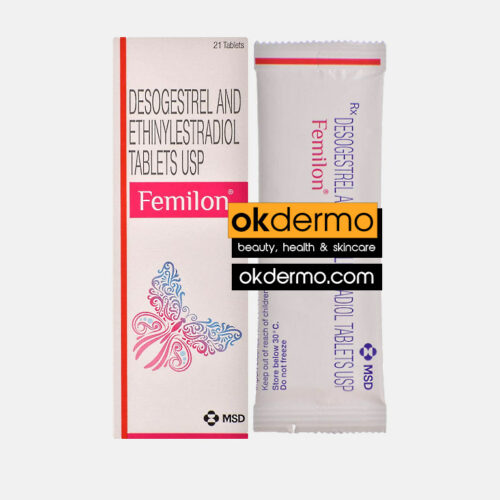
Femilon® Tablets
Ethinyl Estradiol 0.02mg + Desogestrel 0.15mg
Size: 1 Strip of 21 Tablets
Brand name: Viorele, Azurette, Bekyree, Caziant, Cyred, Juleber, Kalliga, Mircette
USD $19.00 Add to cart -
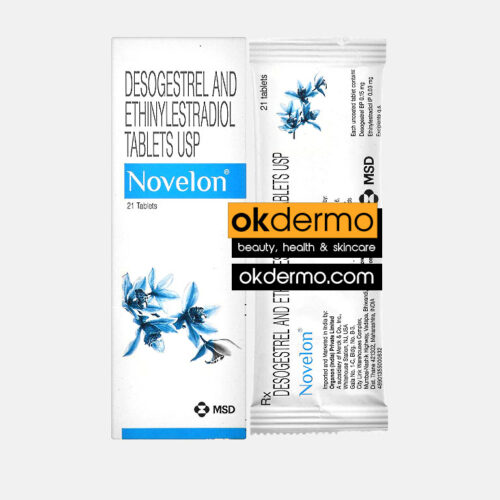
Novelon® Tablets
Ethinyl Estradiol 0.03mg + Desogestrel 0.15mg
Size: 1 Stip of 21 Tablets
Brand name: Apri, Caziant, Cesia, Cyclessa, Kariva, Reclipsen, Solia, Velivet, Desogen
USD $18.00 Add to cart
Mechanism of action
In the female reproductive system, the menstrual cycle is regulated by a complex interplay of hormones produced by the hypothalamus, pituitary gland, ovaries, and uterus.
During a normal menstrual cycle, several hormonal changes occur in the female body under the influence of the hypothalamus, pituitary gland, ovaries, and uterus. These changes are orchestrated to prepare the body for conception and pregnancy.
- Hypothalamus-Pituitary-Ovarian Axis: The hypothalamus secretes gonadotropin-releasing hormone (GnRH), which stimulates the anterior pituitary gland to release follicle-stimulating hormone (FSH) and luteinizing hormone (LH). FSH stimulates the growth and maturation of ovarian follicles, each containing an egg (oocyte), while LH triggers ovulation – the release of a mature egg from the dominant ovarian follicle.
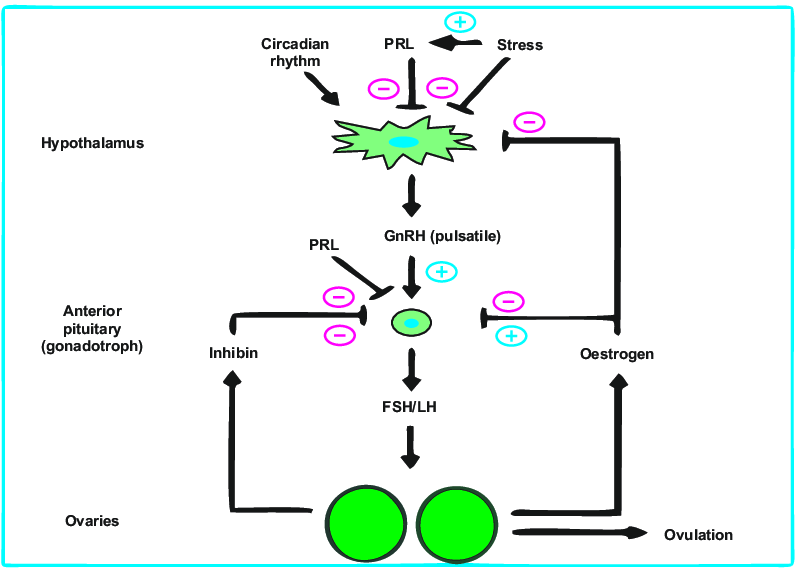
Caption- Hypothalamus-pituitary anterior-ovary axis
- Ovarian Cycle: Ovulation occurs approximately halfway through the menstrual cycle when a surge in LH causes the mature follicle to rupture and release the egg into the fallopian tube. Following ovulation, the ruptured follicle transforms into the corpus luteum, which secretes progesterone and some estrogen. These hormones prepare the endometrium (lining of the uterus) for potential implantation of a fertilized egg.
- Uterine Changes: If fertilization occurs, the fertilized egg travels down the fallopian tube and implants into the thickened endometrium, initiating pregnancy. The uterus undergoes further changes to support the developing embryo and foetus, including increased blood flow to the uterine arteries and enlargement of the uterus.
Now, let’s tie this physiology into the mechanism of action of contraceptive methods.
Combined oral contraceptive pills (COCPs), such as Diane 35, contain synthetic versions of estrogen (ethinyl estradiol) and progesterone (cyproterone acetate). These hormones work by mimicking the natural hormonal fluctuations of the menstrual cycle, but with some key differences:
- Inhibition of ovulation: The synthetic estrogen and progesterone in COCPs suppress the release of FSH and LH from the pituitary gland. This prevents the maturation and release of eggs from the ovaries, effectively inhibiting ovulation.
- Thinning of the endometrium: COCPs also cause the lining of the uterus to become thinner and less hospitable for implantation, further reducing the likelihood of pregnancy.
- Changes in cervical mucus: Additionally, COCPs can thicken cervical mucus, making it more difficult for sperm to penetrate and fertilize an egg.
By interfering with these key aspects of the menstrual cycle and reproductive physiology, COCPs provide highly effective contraception.
Why Diane stands out among other contraceptive options
Diane 35 offers several advantages as a contraceptive option. Unlike traditional birth control pills, which may exacerbate acne and other skin issues, Diane 35 provides dual benefits by improving skin health while also preventing pregnancy.
Additionally, Diane 35 may be prescribed to women with PCOS who require contraception and desire symptom management, making it a valuable treatment option for this population.
Diane 35 Pills Benefits: Beyond Contraception
While Diane 35 is primarily recognized as a contraceptive, its benefits extend far beyond birth control. Research has shown that Diane 35 can help regulate menstrual cycles and reduce symptoms of premenstrual syndrome (PMS), such as bloating, mood swings, and breast tenderness.
Additionally, Diane 35 may be prescribed off-label to treat conditions such as hirsutism and polycystic ovary syndrome (PCOS), further highlighting its versatility in women’s health.
Diane 35 for Hirsutism
Hirsutism refers to excessive hair growth in women in a male pattern, such as on the face, chest, and back. It’s often caused by an excess of androgens, male hormones like testosterone, or increased sensitivity of hair follicles to normal androgen levels.
Diane-35 contains Cyproterone acetate which works by blocking the androgen receptors in the body, thereby reducing the effects of androgens like testosterone.
So, Diane-35 can be quite effective in managing hirsutism by reducing the levels of circulating androgens and thus decreasing excessive hair growth.
Diane 35 for PCOS
Polycystic ovary syndrome (PCOS) is a hormonal disorder that affects women of reproductive age. While the exact cause of PCOS is not fully understood, it is believed to involve a combination of genetic and environmental factors.
The physiology of PCOS involves several key aspects:
- Hormonal Imbalance: Women with PCOS often have higher than normal levels of androgens, which are sometimes referred to as “male hormones.” These androgens can disrupt the normal menstrual cycle and lead to symptoms such as irregular periods, acne, and excess hair growth.
- Insulin Resistance: Many women with PCOS also have insulin resistance, which means their bodies have difficulty using insulin effectively to regulate blood sugar levels. This can lead to high levels of insulin in the blood, which in turn can increase androgen production by the ovaries.
- Ovarian Dysfunction: In PCOS, the ovaries may develop follicles that contain eggs, but these follicles may not mature properly or may not release eggs regularly. This can result in irregular ovulation or lack of ovulation altogether, which can contribute to infertility.
Diane 35 contains both estrogen and progestin meaning that it could potentially reduce symptoms such as acne and excess hair growth in women with PCOS. However, it is important to note that Diane 35 is not specifically approved by regulatory agencies for the treatment of PCOS.
While Diane 35 can be effective in managing symptoms of PCOS, it may not address all aspects of the condition, such as insulin resistance. Therefore, it is often used in combination with other treatments, such as lifestyle modifications (such as diet and exercise) and medications to improve insulin sensitivity.
A study published in the European Journal of Contraception and Reproductive Health Care evaluated the effectiveness of Diane 35 in managing symptoms of PCOS, including irregular menstrual cycles and hirsutism. The researchers found that treatment with Diane 35 resulted in significant improvements in menstrual regularity and a reduction in hirsutism scores compared to placebo, underscoring its efficacy in addressing the hormonal imbalances associated with PCOS.
Diane 35 for Skin
One of the most notable benefits of Diane 35 pills is their efficacy in improving skin health. Research studies have demonstrated that Diane 35 can effectively treat acne vulgaris, a common skin condition characterized by pimples, blackheads, and cysts.
A study published in the Journal of the American Academy of Dermatology found that Diane 35 was significantly more effective than placebo in reducing acne lesions and improving overall skin appearance.
Diane 35 contains cyproterone acetate, a progestin with anti-androgenic properties, which helps regulate sebum production and reduce acne flare-ups. Additionally, ethinylestradiol, a synthetic estrogen, works to stabilize hormonal fluctuations that can contribute to acne development. By addressing both hormonal and inflammatory factors underlying acne, Diane 35 offers a comprehensive solution for individuals struggling with persistent breakouts.
Diane 35 for Acne
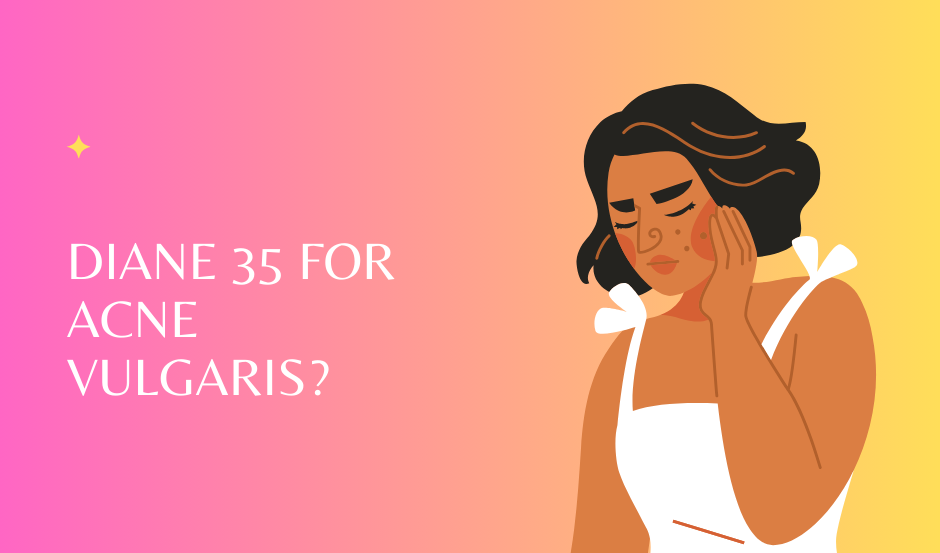
Studies have shown that Diane 35 can reduce sebum production, decrease inflammation, and inhibit the growth of acne-causing bacteria, leading to significant improvements in acne severity and skin appearance.
For this reason, even though Diane 35 is primarily marketed as an oral contraceptive, it can also be prescribed solely for the treatment of acne in women, especially when other acne treatments have not been effective or when acne is related to hormonal imbalances.
When used solely for acne treatment, the dosage and duration may differ from its use as a contraceptive. Your healthcare provider will determine the appropriate dosage based on your individual circumstances, including the severity of your acne and any underlying hormonal issues.
It’s important to note that using Diane 35 solely for acne treatment means you won’t receive contraceptive benefits from the medication. If you’re sexually active and not intending to conceive, you’ll need to use an alternative form of contraception, such as condoms or another oral contraceptive, while taking Diane 35 for acne.
A randomized controlled trial published in the Journal of the European Academy of Dermatology and Venereology compared the efficacy of Diane 35 with a placebo in the treatment of moderate to severe acne. The study found that participants treated with Diane 35 experienced a significant reduction in inflammatory and non-inflammatory acne lesions, as well as improvements in overall skin texture and clarity, compared to those receiving placebo.
Conclusion
In conclusion, Diane 35 pills offer a myriad of benefits beyond contraception, including improved skin health and menstrual regulation. Backed by scientific research, these pills have become a cornerstone in the management of acne and other dermatological conditions. Whether seeking clearer skin or reliable birth control, Diane 35 provides a comprehensive solution for women’s health needs.
References
- Glasier, A. F. (2010). Contraception. In Hormonal contraception (pp. 57-65). Springer, Berlin, Heidelberg.
- Kriplani, A., Periyasamy, A. J., Agarwal, N., Kulshrestha, V., Kumar, A., & Ammini, A. C. (2014). Efficacy and safety of oral contraceptive pills in the management of PCOS. Journal of Human Reproductive Sciences, 7(4), 238–243.
- Lucky, A. W., Henderson, T. A., Olson, W. H., Robisch, D. M., Lebwohl, M. G., Swinyer, L. J., … & Stoner, M. (2002). Effectiveness of norgestimate and ethinyl estradiol in treating moderate acne vulgaris. Journal of the American Academy of Dermatology, 47(3), 399-409.
- Wyatt, K. M., Dimmock, P. W., Jones, P. W., & O’Brien, P. M. (2004). Efficacy of progesterone and progestogens in management of premenstrual syndrome: systematic review. BMJ, 323(7316), 776–780. [This systematic review evaluates the efficacy of progesterone and progestogens, which are components of Diane 35, in managing premenstrual syndrome].
- Shaw, J. C., White, L. E., & Longo, D. L. (2001). Acne: the role of medical therapy. Journal of the American Academy of Dermatology, 45(5), S164-S172.
- HORMONE EXAMINATION IN MENOPAUSE – Scientific Figure on ResearchGate. Available from: https://www.researchgate.net/figure/Hypothalamus-pituitary-anterior-ovary-axis_fig1_336918912 [accessed 23 Apr, 2024]
Post by:
Dr.Marcella Jiovanni
Health and Beauty Expert
“Marcella Jiovanni actively promotes the importance of maintaining healthy skin, she envisions the future of dermatology as moving away from pure medical, pharmacological dermatology and flowing more toward a holistic approach to wellness and skincare.”

















